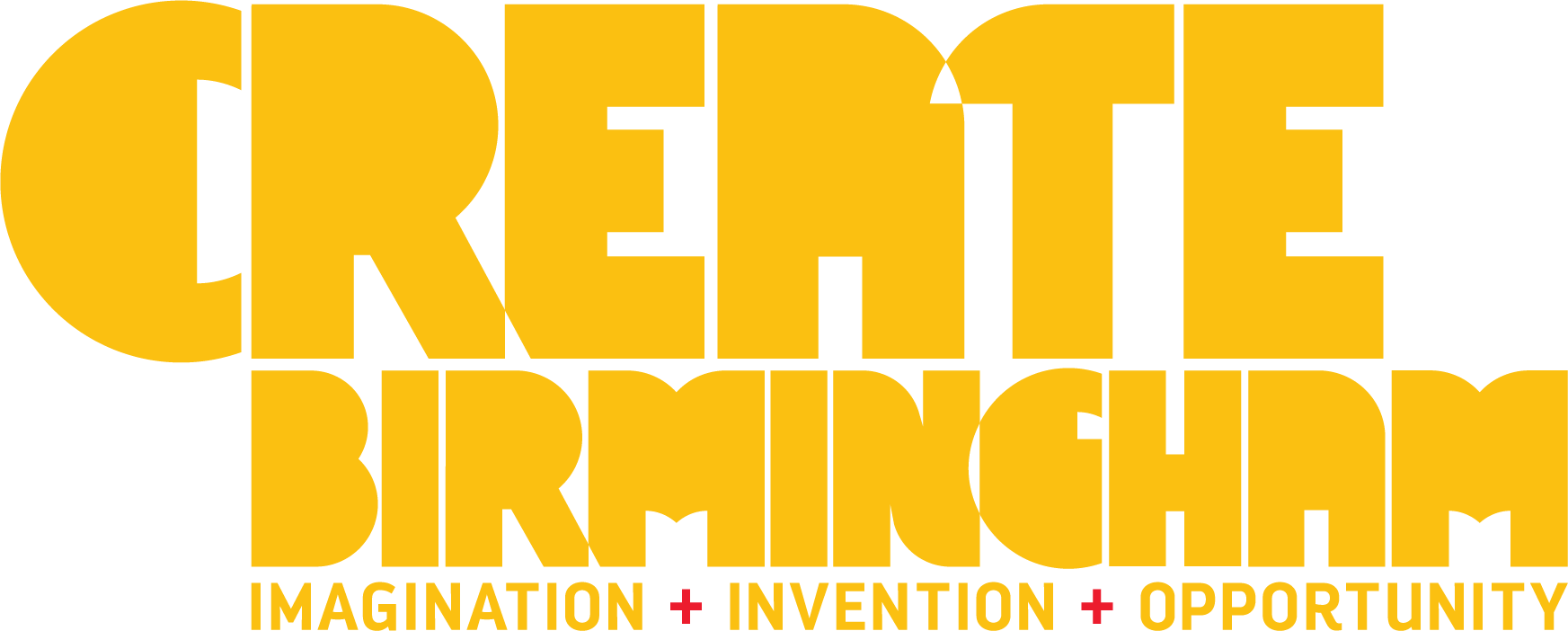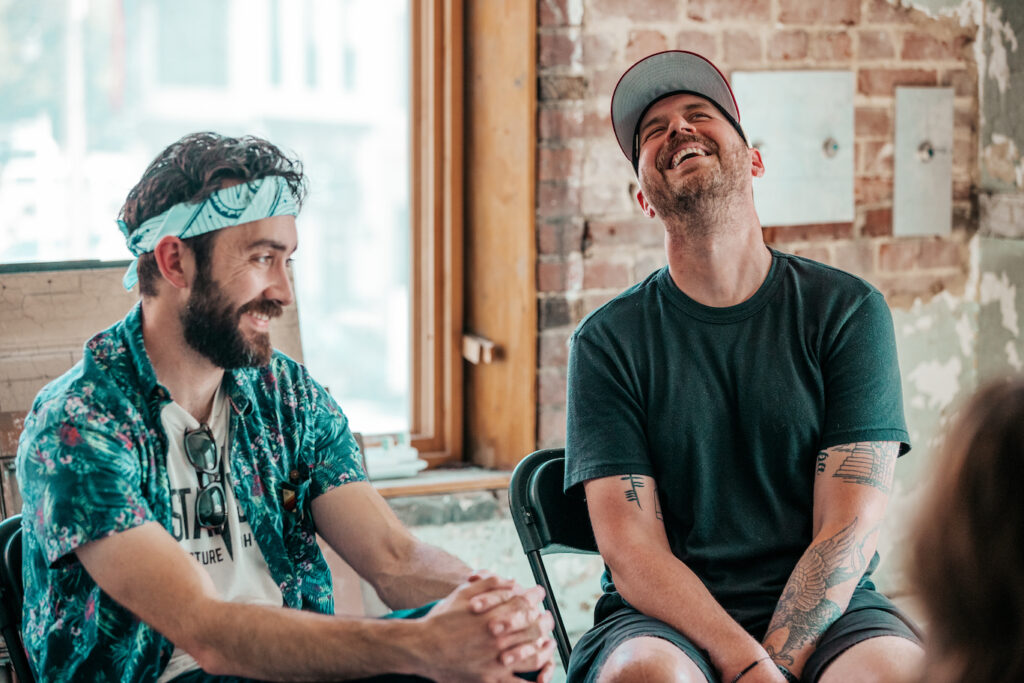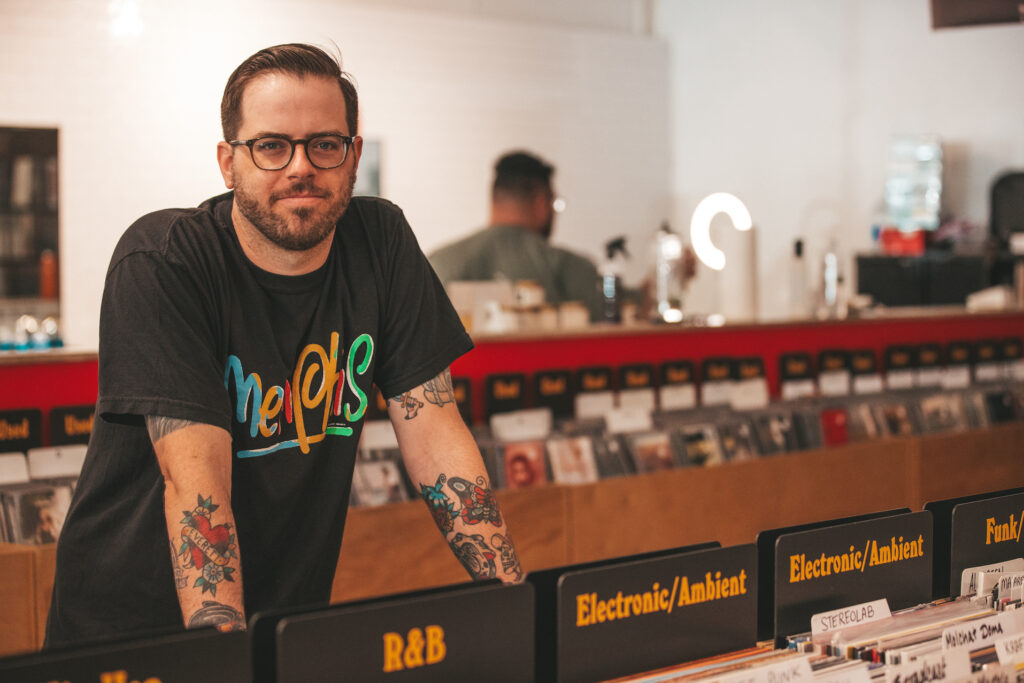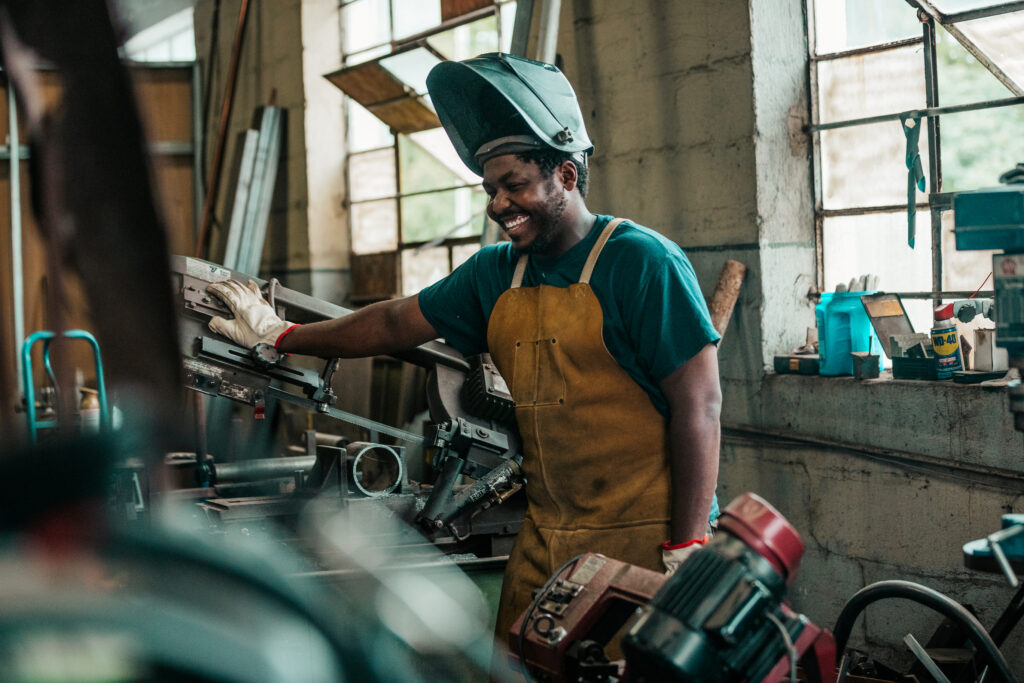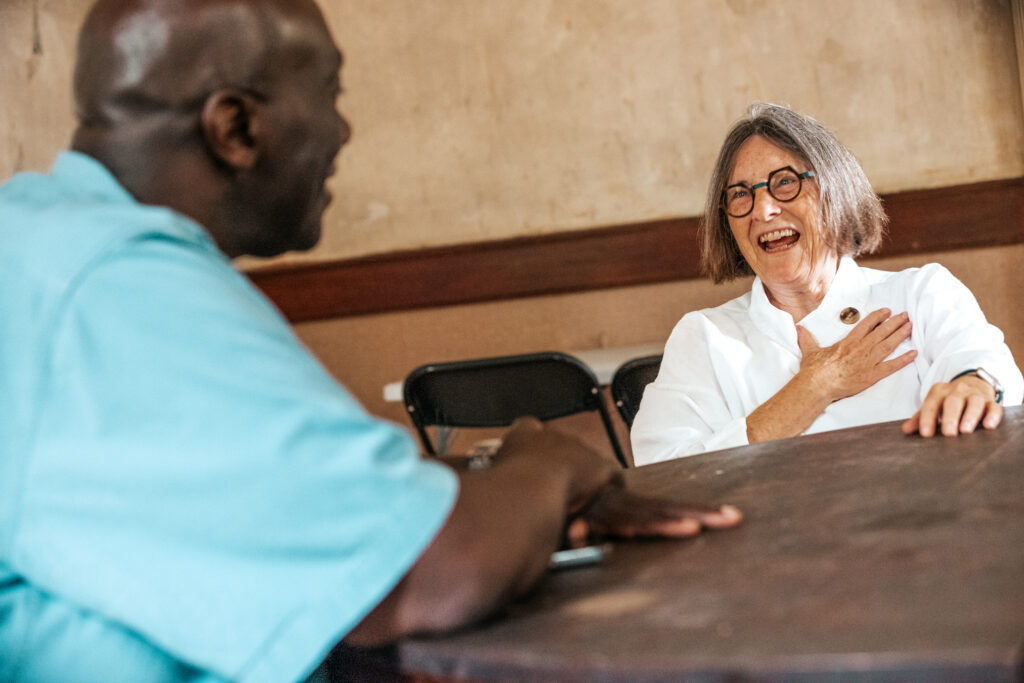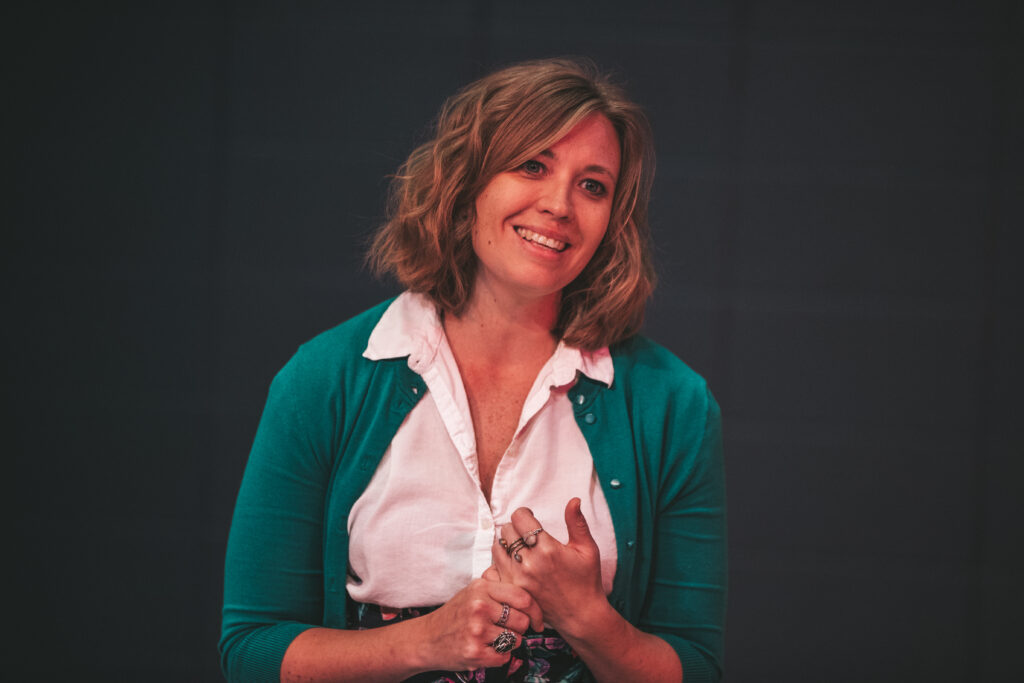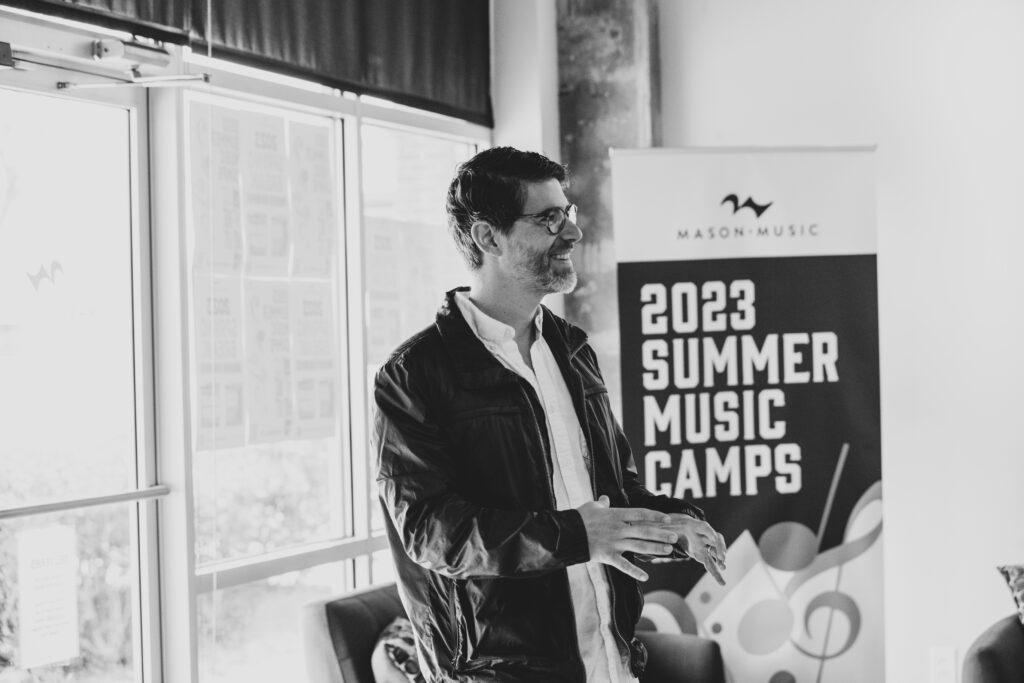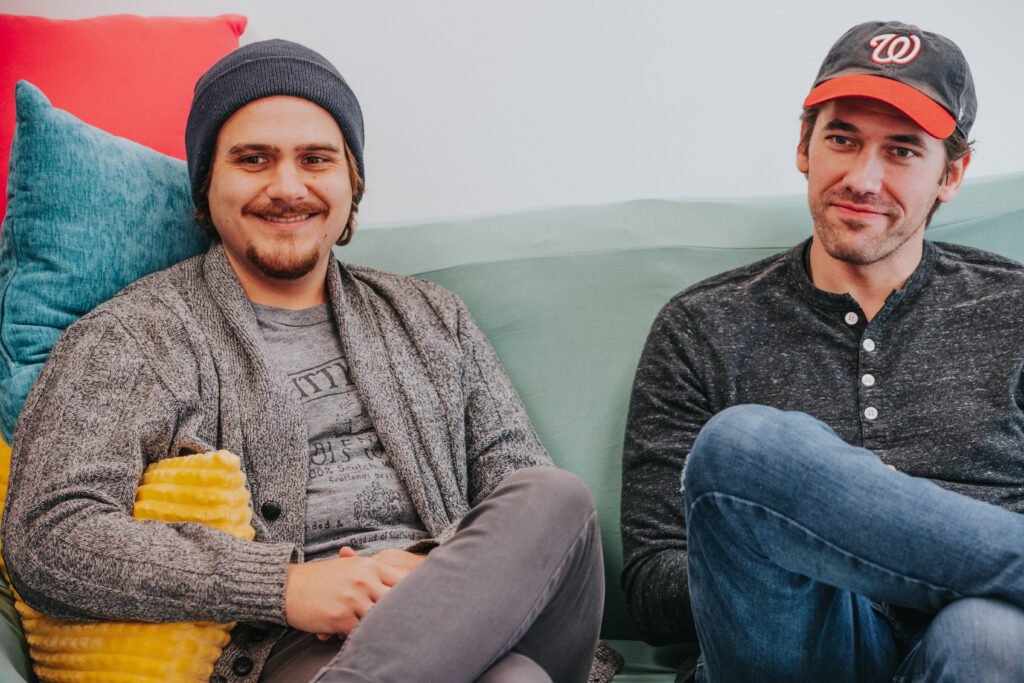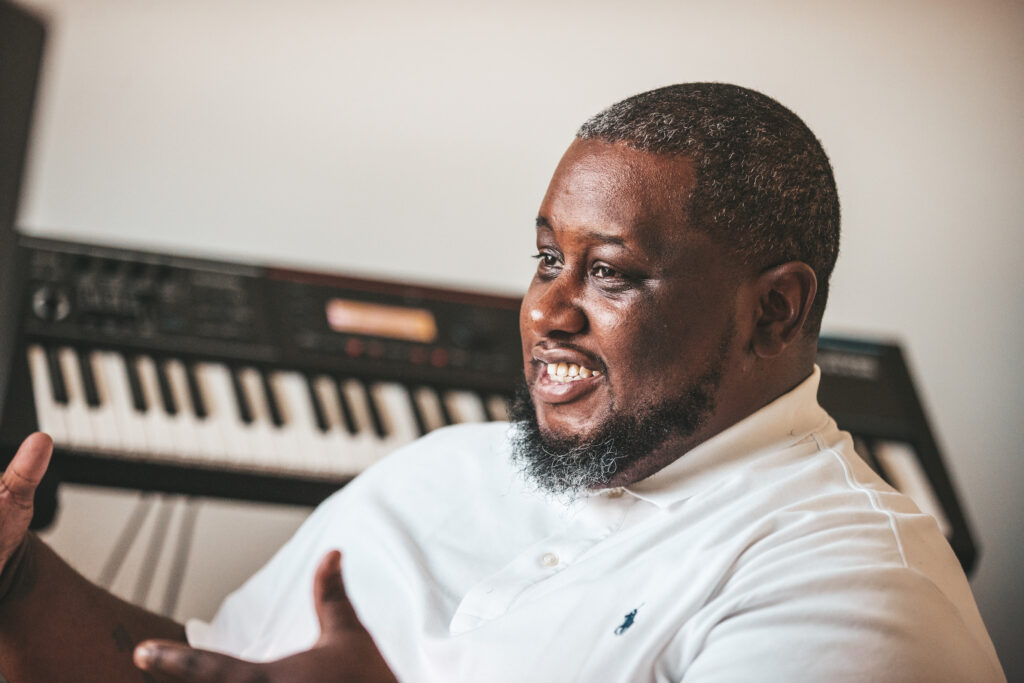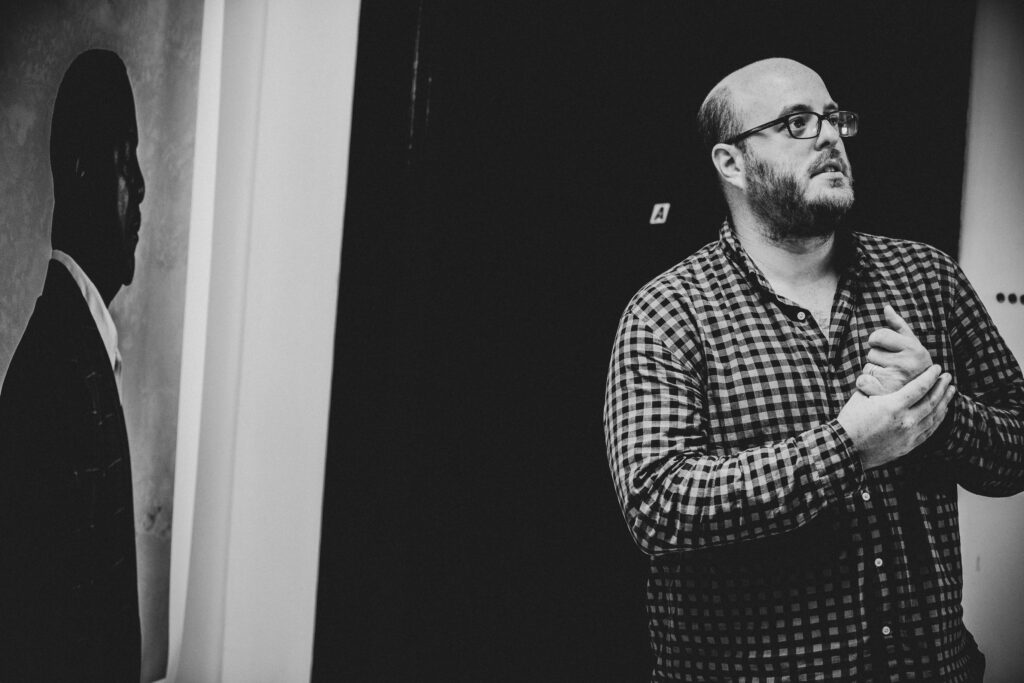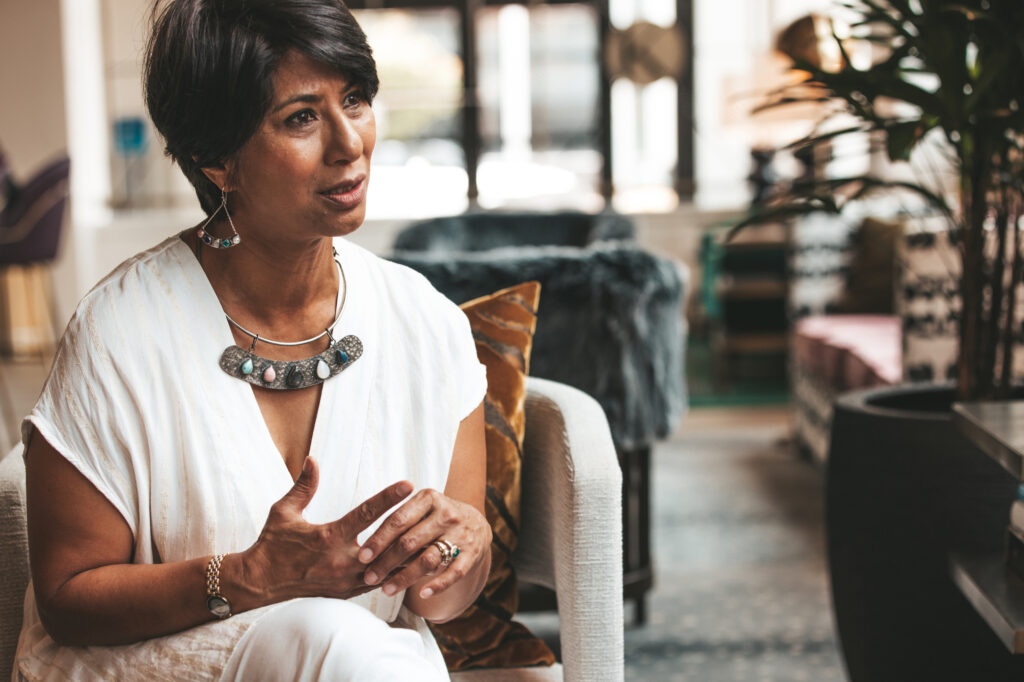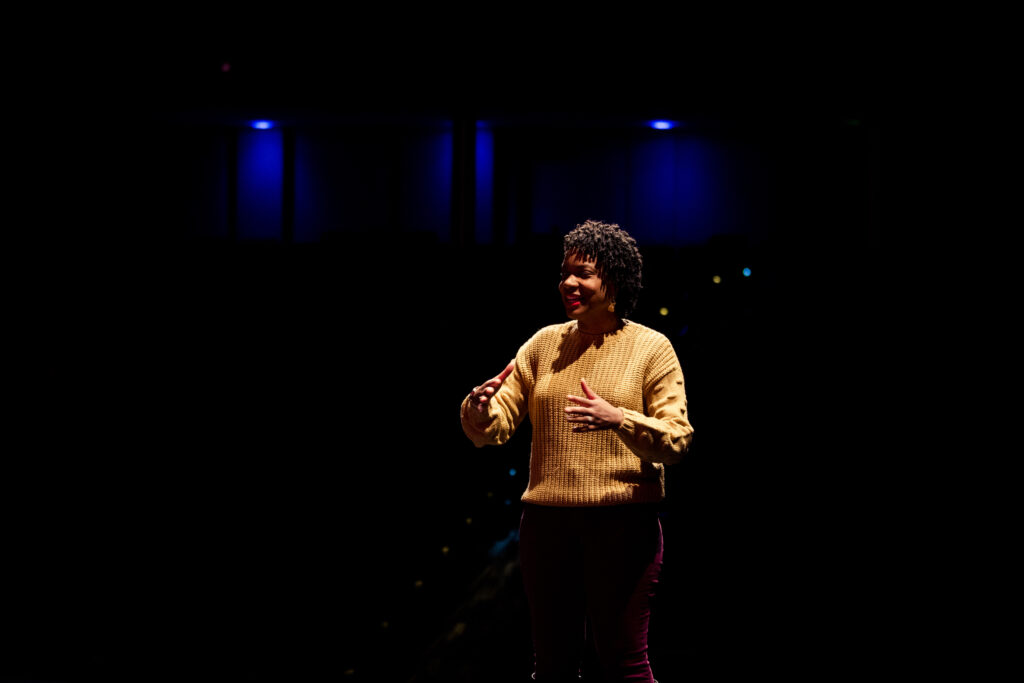Interview: Meghann Bridgeman
Photos: Ambre Amari
 Carey Fountain is a Birmingham artist with a long history of creating and facilitating multi-faceted art events and experiences. He is inspired by the question, Can conversation become art? His curiosity has led to a career as an arts programmer working independently through his own pop-up interactive art event series, Vibes & Virtues, and as a Program Manager for various institutions, currently as the Manager of Public Programs at the Birmingham Museum of Art. Today, we’ll discuss two current projects – Vibes & Virtues as well as The Black Cherry Tree Project. Vibes & Virtues is an interactive art experience and game that encourages dialogue, community, and fun! The Black Cherry Tree Project is a community-driven arts initiative in Birmingham that commemorates the 33 documented lynching victims of Jefferson County. Through collaboration with local artists, the project seeks to honor each victim by planting 33 black cherry tree saplings across Jefferson County Public Parks, accompanied by markers, which allow viewers to learn more about the narrative of each individual and view the various created artworks in the project’s collection. The initiative fosters dialogue about racial reconciliation, ensuring the memory of these victims endures while fostering understanding and healing through art.
Carey Fountain is a Birmingham artist with a long history of creating and facilitating multi-faceted art events and experiences. He is inspired by the question, Can conversation become art? His curiosity has led to a career as an arts programmer working independently through his own pop-up interactive art event series, Vibes & Virtues, and as a Program Manager for various institutions, currently as the Manager of Public Programs at the Birmingham Museum of Art. Today, we’ll discuss two current projects – Vibes & Virtues as well as The Black Cherry Tree Project. Vibes & Virtues is an interactive art experience and game that encourages dialogue, community, and fun! The Black Cherry Tree Project is a community-driven arts initiative in Birmingham that commemorates the 33 documented lynching victims of Jefferson County. Through collaboration with local artists, the project seeks to honor each victim by planting 33 black cherry tree saplings across Jefferson County Public Parks, accompanied by markers, which allow viewers to learn more about the narrative of each individual and view the various created artworks in the project’s collection. The initiative fosters dialogue about racial reconciliation, ensuring the memory of these victims endures while fostering understanding and healing through art.
Carey, I’ve had the pleasure of collaborating with you on multiple projects and am excited to highlight these two current projects you’re leading.
A little bit of background – you’ve been a fearless creative entrepreneur for a while. Can you share a bit about your early exposure and how that positioned you for your endeavors today?
Definitely. My journey into the arts began in elementary school, where I was first introduced to its transformative power. Later, during my college years at the University of Alabama, I interned at the University of Alabama’s Creative Campus, and it was there I started to understand the structure behind art careers and art projects. You know… how arts can influence community and how arts can be impactful.
One of my earliest projects with Creative Campus was a hip-hop program named Tidal Flow, which was a collaboration of artists, poets, and dancers tasked with proving that “Hip-Hop is not dead.” It was an amazing learning experience that made me realize how much I enjoy the creative programming process. That’s where the evolution began. I started organizing different events, and as a dedicated musician and visual artist, I used programming to allow me to share my creations alongside other artists and musicians, which also allowed me to build relationships and learn about the exceptional talent that lives and breeds in Birmingham.
Now, I’m really interested in dialogues and convos as a way of art. The way we communicate and perceive art – that tension between universal experience and our own personal lives. The masks we hide behind every day. How can we get people comfortable with those big ideas?
 College was really important for me in shaping my artistic view. At the University of Alabama, I had the opportunity to major in the New College program during my undergrad. This interdisciplinary program allowed students to create their own major and propose their own projects. I initially went to school thinking I wanted to be a journalist but was discouraged by the influence of the internet on the journalism field. I ended up making Media Business my depth focus in the New College program, which allowed me to bring my passions for art and media together. It was great. They’d let me turn in various creative projects as part of the evaluation for that degree. I actually turned in a self-produced music project I created for one of my final projects at one point. Being in that environment was really inspiring in making me believe in my ideas and understanding the power of collaboration. I learned a lot about how to use an interdisciplinary approach when creating, evaluating, and approaching life.
College was really important for me in shaping my artistic view. At the University of Alabama, I had the opportunity to major in the New College program during my undergrad. This interdisciplinary program allowed students to create their own major and propose their own projects. I initially went to school thinking I wanted to be a journalist but was discouraged by the influence of the internet on the journalism field. I ended up making Media Business my depth focus in the New College program, which allowed me to bring my passions for art and media together. It was great. They’d let me turn in various creative projects as part of the evaluation for that degree. I actually turned in a self-produced music project I created for one of my final projects at one point. Being in that environment was really inspiring in making me believe in my ideas and understanding the power of collaboration. I learned a lot about how to use an interdisciplinary approach when creating, evaluating, and approaching life.
Which of these projects came first? And did one grow out of the other?
Vibes & Virtues definitely came first. I’m realizing that Vibes & Virtues is a personal philosophy as well as a tool for communal dialogue. Recently, I came to the realization that Vibes & Virtues is a philosophy that connects my multidisciplinary practice. Vibes & Virtues is a tool to create dialogue, and because The Black Cherry Tree Project (TBCTP) is about exploring our community’s history of racial violence through art and dialogue, the two naturally merge to support each other.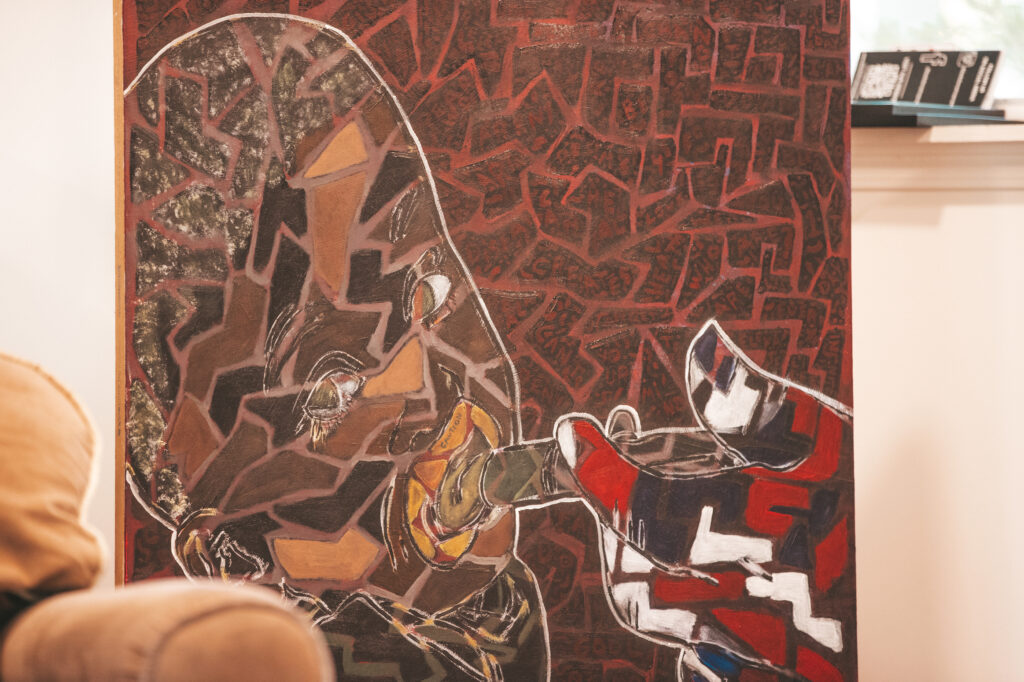
TBCTP hosts monthly community conversation programming to serve as a platform for our community to explore the potentiality of racial reconciliation. We collaborated with The Ballard House Project this year, and I actually created a custom Vibes & Virtues game with questions about race, reconciliation, and community in honor of the 60th anniversary of the 1963 Sixteenth Street Church bombings. Beginning in 2023, from June through September, we met twice monthly, and participants were given a question card to reflect on and respond to with a fellow attendee. After responding, they’d place their question card on the corresponding game board, and over the course of each community conversation event, the question cards placed on the board would come together like puzzle pieces to reveal an artwork made by myself in collaboration with artist Neal Hamilton. The image we created represented resilience and the ways our community has transformed since the events of 1963. It was unveiled at the 16th St. Baptist Church commemorative event this year on September 14. This is one of many examples of how I connect Vibes & Virtues with TBCTP.
 It’s so great that both the conversation itself and the physical cards take on artistic meaning and shape. What happened to the artwork you all created for the 16th St. Baptist Church event?
It’s so great that both the conversation itself and the physical cards take on artistic meaning and shape. What happened to the artwork you all created for the 16th St. Baptist Church event?
The artwork was actually deconstructed. After the puzzle was fully complete, we encouraged attendees to remove a question card and take it home for reflection after leaving the September 14 event. We are talking about ways to exhibit the finished image, such as making it a mural or creating prints; regardless, it’s okay to let the project live in the moment and then proceed to the next conversation.
Has Vibes & Virtues always been a game concept? How has it evolved into the public art tool you just described?
Vibes & Virtues evolved from everything I’ve done. It’s an umbrella. It’s really my whole brand. So, the brand actually stretches beyond the game into clothing, music, paintings, etc. It’s a philosophy that motivates me in a way. The vibes are about the energy you put out in the world and how you’re dealing with things. We all want to have good vibes, but what is your message? What’s the virtue you bring with you? 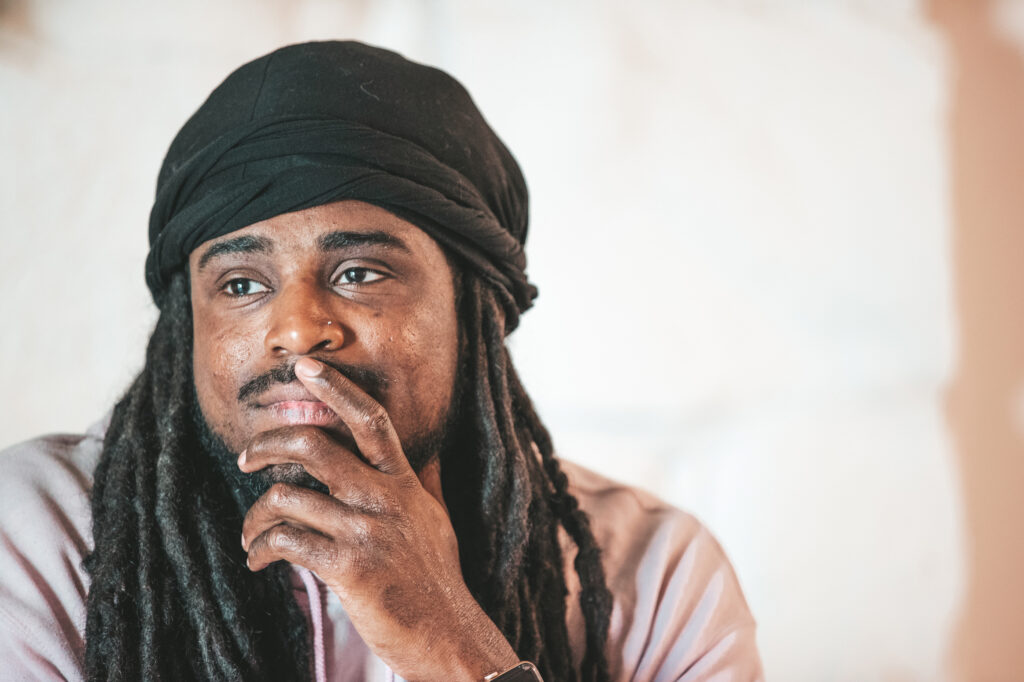
It actually stemmed from a brand 2 friends and I created in college called “Live Grind Loveove.” The philosophy behind the clothing line was to use clothing as a means to inspire one to “LIVE free GRIND hard & LOVE life.” After the clothing line ran its course, I had the idea of building a website that could incentivize people to engage in conversation. This was a blog where people could watch and submit various media, and viewers could leave responses to various prompts associated with the content. Each response would earn points that could be redeemed for items in our webstore. These were artworks, clothing items, shoes, and many more all from Birmingham-based vendors. Overall, it was hard to communicate how the website worked to folks, and I struggled with getting traffic to the website. I spent lots of money to build a website that no one was using. So I thought of putting on an event to communicate how people can use the website and hopefully encourage them to sign up. This evolved into an interactive, multidimensional event. Because the event was so well received, I just kept doing more and more Vibes & Virtues events.
It opened up my mind to what it’s become today. People began asking for a take-home element, and that’s where I began conceptualizing an actual purchasable, take-home version of the experience. This idea culminated in a card game that I invented with a unique set of rules. The gameplay is like a mix between Cards Against Humanity and Uno and is now available to purchase via the website at vibesandvirtues.com. In total, we’ve had roughly 15 unique Vibes & Virtues events over the past 7 years. My consistency with these events eventually led to the work I am now doing as the Manager of Public Programs & Partnerships at the Birmingham Museum of Art.
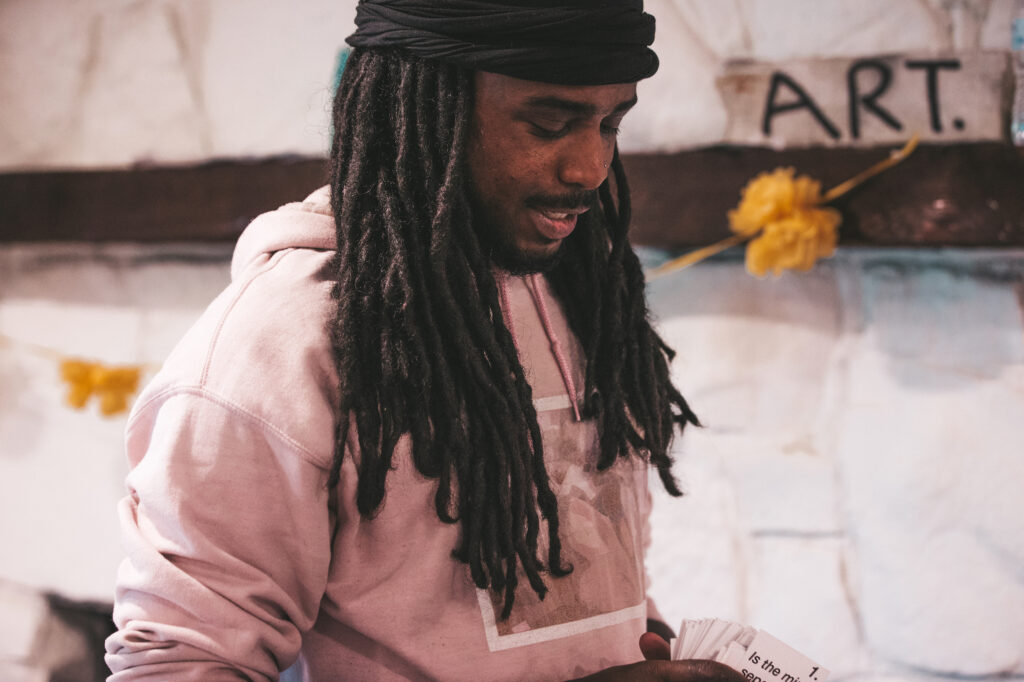
Did you find people resistant to the idea at first?
In some ways, yeah. Umm, and it shifts. People are resistant if the experience is overly involved and doesn’t allow social interaction to flow naturally. Depending on the nature of the event, I try to take into account many variables to create a customized experience with unique rules to favor the environment, audience, and goal. I’m always gauging what sticks with people and what doesn’t and using the feedback to inspire the next iteration of the event. Like from last month to this month, it might change. I’ve been playing a lot with how to build the game and event experience so it works for most people.
What environments do you hope might embrace Vibes and Virtues?
I mean, the original intent was to create something where strangers could engage and two unlikely people could find commonalities. I hope they leave with the realization that they have way more in common than they might have thought. I am motivated by our ability to choose to focus on how we’re alike or are different. My belief is that we always have far more in common than we do differences. We just have to look for those things in each other. The customized Vibes & Virtues events I create sometimes feel like a social experiment, and I’m always adapting them to understand what works best to break the ice and encourage dialogue and lasting relationships.
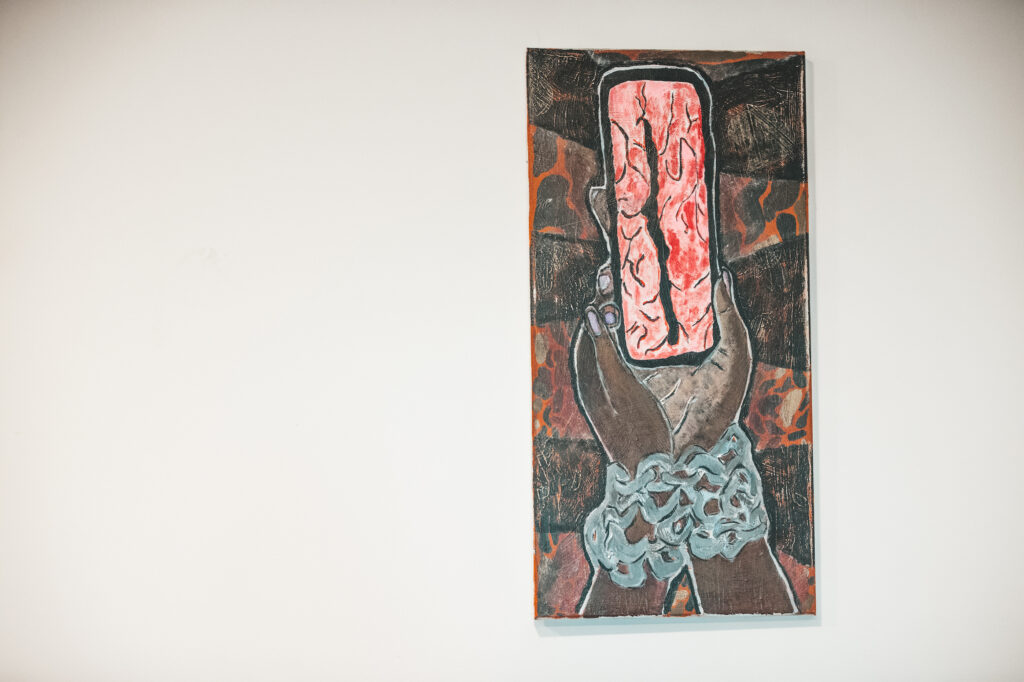
Will there be new or niche editions moving forward?
Yes, yes, and yes. Maybe one for kids? We can try it! The take-home version of Vibes & Virtues is something I have big hopes to evolve into different versions. The goal was to make a card game that encourages deep and engaging conversation for game players yet is simple to learn and has strategic elements similar to Uno. Making it simple to learn and very fun!
Shifting gears… When was The Black Cherry Tree Project introduced?
TBCTP came to be in 2020, right after George Floyd was murdered. It stemmed from a convo with project co-founder Noah Duffy about how it takes someone’s death for us as a society to reflect and remember. What is it about our society that has an infatuation with tragedy? Noah and I were talking about that after George Floyd’s death and wondering about the ways we can ensure we’re creating a better future. What’s causing the racialized violence we too often see?? How can art shift that? How can we change? How can we ensure we learn from our past to build a better future? My belief is that the answers to these questions begin with us, and the goal of this project is to use art as a vehicle to have those necessary conversations. The trees commemorate the lives of the documented lynching victims in our community they’ll outlive us. By working with artists who create artworks in honor of each victim, it requires us all to reflect. You can’t talk about race without thinking about your identity within the racialized construct. I believe that creating pathways for those conversations is key to racial reconciliation.

The Black Cherry Tree Project is complementary to the work of the Jefferson County Memorial Project and, of course, to the Equal Justice Initiative’s work across Alabama. How do you see them all coming together? And what impact do you think they’ll have on present and future generations?
So, I would say TBCTP complements the important work of JCMP. JCMP is doing the work to research the history and uncover the stories about the victims of racial terror within our community. That’s important because the work they’re doing is acknowledging what happened and memorializing these horrific and often overlooked stories. TBCTP is touching a different avenue of the work by involving artists to familiarize themselves with the stories of these lynching victims and using their created artworks as a vessel to create programming and have deeper conversations that encourage us to remember our past when building our future. This work can be very emotionally charged. It never loses its impact. Art has a way of inspiring people and inviting them into a deeper and uncomfortable conversation. The work between TBCTP and JCMP all combine to ultimately strengthen our community and bring an understanding of how we are reckoning with our past.
The planting of the trees extends the conversation past our lives. Alongside each tree will also be a commemorative marker that highlights the name of the victim the tree is commemorating. Each corresponding marker will also have a QR code that viewers can scan to learn more about the victim’s story as well as see all the commemorative artworks that have been created over the years to honor the respective victim.
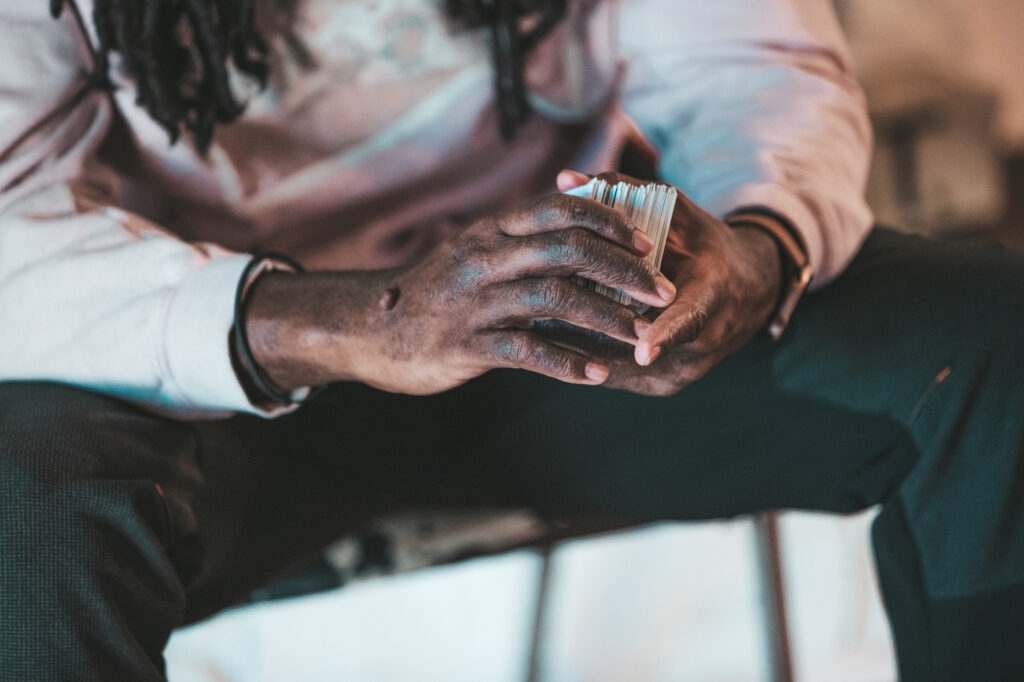
Can you share a bit more about the artists and artwork?
TBCTP does a public exhibition once a year. The current cohort’s exhibition will be a month-long exhibition beginning in December at Gallery Vox. We’re building a collection of works that honor these victims. The five-year goal is to have a full collection where we can show these works consistently. We introduce the second exhibition this year, and we have 15 artists from mixed mediums, including both performing and visual artists. The artists are focused exclusively on the 33 lynching victims in Jefferson County. We’ve started conceptualizing how to best work with schools and are exploring how to best integrate a TBCTP curriculum in the BCS school system in 2024.
In the beginning of 2024, we’ll also be planting all the black cherry trees! The City has approved each of the 33 saplings to be placed in 33 different public parks across Jefferson County. We’re working with Fountain Heights Farm to get everything ready to go in the first part of next year.
 Where can people learn more about both of these projects and pick up some Vibes & Virtues games for the holidays?
Where can people learn more about both of these projects and pick up some Vibes & Virtues games for the holidays?
You can visit the websites – vibesandvirtues.com & blackcherrytreeproject.com.
You can buy a deck of cards on the website and look out for me at pop-up events this fall. You can also follow both projects on Instagram.
